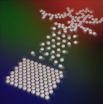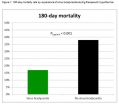(Press-News.org) CHICAGO – Oct. 20, 2014 – Researchers have developed a fast and inexpensive way to make facial prostheses for eye cancer patients using facial scanning software and 3-D printing, according to findings released today at AAO 2014, the 118th annual meeting of the American Academy of Ophthalmology. Their novel process can create more affordable prosthetics for any patients who have hollow sockets resulting from eye surgery following cancer or congenital deformities.
In the United States, more than 2,700 new cases of eye cancer are diagnosed each year, according to the American Cancer Society, and the mortality rate is high for the disease. Some patients undergo a life-saving surgery known as exenteration that involves removing the contents of the eye socket and other tissue. The research team hopes to bring these patients relief by providing a more affordable facial prosthesis that will allow them to live their lives more fully and with less stigma.
Conventional facial prostheses can cost $10,000 to $15,000 and take weeks to produce. Each one is created by an ocularist, an artisan who makes a mold of the face, casts it using rubber and then adds the final touches such as skin color and individual eyelashes. Patients and their families often have to pay out-of-pocket for facial prostheses because health insurance oftentimes will not cover the cost.
University of Miami researchers developed a process to manufacture facial prostheses in a matter of hours at a fraction of the cost of a traditional prosthesis using topographical scanning and 3-D printing technology. Patients are scanned on the undamaged side of their face using a mobile scanner. The software then creates a mirror image. Along with a scan of the side of the face with the orbital defect, the program can mesh the two scans together to create a 3-D image of the face. The topographical information then goes to a 3-D printer, which translates the data into a mask formed out of injection-molded rubber suffused with colored pigments matching the patient's skin tone.
The project started as the brainchild of David Tse, M.D., professor of ophthalmology at the Bascom Palmer Eye Institute in Florida and the Nasser Ibrahim Al-Rashid chair in ophthalmic plastic, orbital surgery and oncology. Dr. Tse was treating a child with eye cancer who had both eyelids removed and underwent exenteration. The family could not afford an ocularist, so Dr. Tse raised donations to help pay for her first prosthesis. Now a teenager, she has grown out of the prosthesis and must instead wear an eye patch.
"Hopefully, using this quick and less expensive 3-D printing process, we can make an affordable facial prosthesis for her and also help thousands of other people like her who lack the resources to obtain one through an ocularist," said Dr. Tse.
Designed and developed in partnership with Dr. Tse and a team at the Composite Materials Lab at the University of Miami, the 3-D printed prosthesis possesses several advantages over the conventional type created by an ocularist. The material involves a proprietary mix of nanoparticles that provides extra reinforcement and makes it possible to match many shades of skin. Over time, conventional facial prostheses can discolor and fray at the edges, but nanoclay protects the material from breaking down and changing color when exposed to moisture and light. It also prevents dirt from depositing. If the prosthesis ever needs to be replaced, reproduction can happen with the press of a button.
"Once we have a patient scanned, we have the mold, so we can create a new prosthesis in no time," said Landon Grace, Ph.D., director of the lab and an assistant professor of mechanical and aerospace engineering. "Our long-term goal is to help patients anywhere in the world. We could get a mobile scan, download the data in Miami, print out the prosthesis and ship it back to the patient the next day."
INFORMATION:
Rapid and cost-effective orbital prosthesis fabrication via automated non-contact facial topography mapping and 3-D printing (PO467) was presented at AAO 2014, the 118th annual meeting of the American Academy of Ophthalmology in conjunction with the European Society of Ophthalmology, which is in session October 18-21 at McCormick Place in Chicago. More than 25,000 attendees and 620 companies from 123 countries gather each year to showcase the latest in ophthalmic education, research and technology. To learn more about the event Where All of Ophthalmology Meets, visit http://www.aao.org/2014.
More 3-D Printing Technology Research
Additional 3-D printing technology results will be presented at AAO 2014 by ophthalmologist David Myung, M.D., Ph.D., of the Byers Eye Institute at Stanford University. His work centers on a 3-D-printed lens adapter system that enables high quality images of the eye using smartphones, which may help increase access to more affordable eye care. The poster is titled "Design and Rapid Prototyping of a Novel 3-D Printed Smartphone Lens Adapter System" (PO328).
Note to Editors: Media are invited to attend a news briefing on this research on Monday, Oct. 20 from 11:15 a.m. to 12:15 p.m. CDT in McCormick Place N426A. Media registration is required and can be completed at http://www.aao.org/newsroom/media_reg.cfm.
About the American Academy of Ophthalmology
The American Academy of Ophthalmology, headquartered in San Francisco, is the world's largest association of eye physicians and surgeons, serving more than 32,000 members worldwide. The Academy's mission is to advance the lifelong learning and professional interests of ophthalmologists to ensure that the public can obtain the best possible eye care. For more information, visit http://www.aao.org.
The Academy is also a leading provider of eye care information to the public. The Academy's EyeSmart® program educates the public about the importance of eye health and empowers them to preserve healthy vision. EyeSmart provides the most trusted and medically accurate information about eye diseases, conditions and injuries. OjosSanos™ is the Spanish-language version of the program. Visit http://www.geteyesmart.org or http://www.ojossanos.org to learn more.
BUFFALO, N.Y. — One of the few studies to examine gender differences among patients with irritable bowel syndrome (IBS) has found that males with the condition experience more interpersonal difficulties than do females with the condition. The findings challenge what had been predicted by the University at Buffalo investigator and his colleagues.
The study, "Understanding gender differences in IBS: the role of stress from the social environment," is being presented during the Oct. 19 poster session at the American College of Gastroenterology (ACG) annual meeting in ...
Being depressed is depressing in itself and makes you feel even worse. That is one reason why it is so hard to break out of depressive conditions.
New research out of Queen's University offers a new approach to do just that. Nikolaus Troje (Psychology, Biology and School of Computing) along with clinical psychologists from the University of Hildesheim, Germany, have shown that walking in a happy or sad style actually affects our mood. Subjects who were prompted to walk in a more depressed style, with less arm movement and their shoulders rolled forward, experienced worse ...
A drug being studied as a fast-acting mood-lifter restored pleasure-seeking behavior independent of – and ahead of – its other antidepressant effects, in a National Institutes of Health trial. Within 40 minutes after a single infusion of ketamine, treatment-resistant depressed bipolar disorder patients experienced a reversal of a key symptom – loss of interest in pleasurable activities – which lasted up to 14 days. Brain scans traced the agent's action to boosted activity in areas at the front and deep in the right hemisphere of the brain.
"Our ...
Ever wondered how people figure out what is fair? Look to the brain for the answer. According to a new Norwegian brain study, people appreciate fairness in much the same way as they appreciate money for themselves, and also that fairness is not necessarily that everybody gets the same income.
Economists from the Norwegian School of Economics (NHH) and brain researchers from the University of Bergen (UiB) have worked together to assess the relationship between fairness, equality, work and money. Indeed, how do our brains react to how income is distributed?
More precisely, ...
Microscopic particles that bind under low temperatures will melt as temperatures rise to moderate levels, but re-connect under hotter conditions, a team of New York University scientists has found. Their discovery points to new ways to create "smart materials," cutting-edge materials that adapt to their environment by taking new forms, and to sharpen the detail of 3D printing.
"These findings show the potential to engineer the properties of materials using not only temperature, but also by employing a range of methods to manipulate the smallest of particles," explains ...
The health and environmental implications of fossil fuel exploitation, nuclear waste or mining-related pollution are some of the more well-known effects of the increasing energy and material use of the global economy. One way to confront environmental injustice is to use economic evaluation tools. Environmental Justice Organisations (EJOs) are conducting cost-benefit analyses (CBAs) and multi-criteria analyses (MCA) with the support of academics, in order to explore and reveal the un-sustainability of environmentally controversial projects. In some cases, that strategy ...
An international research collaboration led by UC San Francisco researchers has identified a genetic variant common in Latina women that protects against breast cancer.
The variant, a difference in just one of the three billion "letters" in the human genome known as a single-nucleotide polymorphism (SNP), originates from indigenous Americans and confers significant protection from breast cancer, particularly the more aggressive estrogen receptor–negative forms of the disease, which generally have a worse prognosis.
"The effect is quite significant," said Elad ...
Blind cave fish may not be the first thing that comes to mind when it comes to understanding human sight, but recent research indicates they may have quite a bit to teach us about the causes of many human ailments, including those that result in loss of sight. A team of researchers, led by Suzanne McGaugh, an assistant professor in the University of Minnesota's College of Biological Sciences, is looking to the tiny eyeless fish for clues about the underpinnings of degenerative eye disease and more. A new study, published in the October 20 online edition of Nature Communications, ...
Head Start programs may help low-income parents improve their educational status, according to a new study by Northwestern University researchers.
The study is one of the first to examine whether a child's participation in the federal program benefits mothers and fathers – in particular parents' educational attainment and employment.
"Studies on early childhood education programs have historically focused on child outcomes," said study lead author Terri Sabol, an Assistant Professor of Human Development and Social policy at Northwestern's School of Education ...
Geneva, Switzerland – 20 October 2014: Researchers may have developed a way to potentially assist prognostication in the first 24 hours after out-of-hospital cardiac arrest (OHCA) when patients are still in a coma. Their findings are revealed today at Acute Cardiovascular Care 2014 by Dr Jakob Hartvig Thomsen from Copenhagen, Denmark.
Acute Cardiovascular Care is the annual meeting of the Acute Cardiovascular Care Association (ACCA) of the European Society of Cardiology (ESC) and takes place 18-20 October in Geneva, Switzerland.
Dr Thomsen said: "When we talk ...



